Connecting the nutrition support community, line by line
04 Oley Staff Is Growing
Meet Tracey and Jade, the newest Oley staff members.
06 Enteral Feeding Intolerance
Recent studies suggest peptide-based formulas may help reduce symptoms of enteral feeding intolerance.
10 Speaking Up for Yourself and Others
Advocacy can empower individuals to create change in healthcare, education, employment, and community inclusion.
Vol. 45, No. 2 | Summer 2024
LifelineLetter
The Oley Foundation is a home nutrition therapy community and advocacy group. Learn more: Oley.org
Lifeline Letter
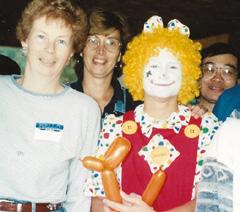

Executive Director: Beth Gore, PhD
Editor, LifelineLetter; Director of Advocacy: Lisa Crosby Metzger
Director of Development & Communications: Alaina McCormick
Director of Corporate Engagement: Tracey Giambertone, MS, RDN, LDN, CNSC
Manager of Education & Innovation: Maisy Cyr, MSW
Manager of National Advocacy: Andrea Taylor, RD, CNSC
Operations Manager: Cathy Harrington
Youth Program Coordinator: Jade Lusk
Science & Medicine Advisor: Manpreet Mundi, MD, FASPEN
Board of Trustees: Kelly Tappenden, PhD, RD, FASPEN, President ; David Mercer, MD, PhD, FRSCS, FACS, President Elect ; Steve Atkinson, Treasurer ; John Mahalchak, Secretary ; Lisa Epp, RDN, CNSC, LD; Roy George; Shirley Huang, MD; Sivan Kinberg, MD, MS, MA; Vanessa Kumpf, PharmD, BCNSP, FASPEN
Our Mission: To enrich the lives of those living with home IV nutrition or tube feeding through advocacy, education, community and innovation.
The Oley Foundation provides its 28,000+ members with critical information on topics such as medical advances, research, and health insurance. The foundation is also a source of support, helping consumers on home IV nutrition and tube feeding overcome challenges, such as their inability to eat and altered body image.
All Oley programs are offered free of charge to consumers and their families.
Our Vision: Oley envisions a world where patients are united, supported and empowered to thrive on home nutition support.
How to Support Oley: Donations are tax deductible and are accepted at oley.org/donations or at the street address listed below. We appreciate your support.
Please note: Oley members share their stories for the benefit of others in similar circumstances. Please do not contact them for solicitation, marketing or research.
Summer 2024 • Volume 45, No. 2
Phone: (518) 262-5079
Email: info@oley.org oley.org
Publisher: The Oley Foundation
Albany Medical Center, MC-28 43 New Scotland Avenue Albany, NY 12208
page 2 03 Oley Voices 04 Staff News 05 Significance Beyond Statistics on YouTube 06 Enteral Feeding Intolerance 09 Register for Kidz Klub @ Oley 2024 10 Speaking Up for Yourself and Others 15 Where was Oley? 18 2024-25 Calendar & Oley Events 19 Corporate Partners Behind the Scenes: Making Connections 14 Oley 2024: Connected Information & FAQs 16 A quarterly publication of the Oley Foundation @the_oley_foundation @theoleyfoundation @the-oley-foundation @TheOleyFoundation
LifelineLetter
table of contents
© 2024 The Oley Foundation. All rights reserved. The information provided is for educational purposes only and is not intended as medical advice. Although clinical information is peer reviewed, you are advised to consult with your healthcare team before making any changes to your care plan.
Oley Voices
Maisy Cyr, MSW | Manager of Education & Innovation

In recognition of Mental Health Awareness Month, we wanted to acknowledge that the Oley Foundation understands how challenging it can be to navigate the complex relationship between mental and physical health. Grieving the way things used to be, adapting to a new lifestyle, fighting with insurance companies, finding a balance between managing care and maintaining a social life, building a support system, trying to establish some sense of normalcy amidst the uncertainty. These experiences can feel so isolating, but many people in this community have faced similar struggles. You are not alone.
While we have known that mental health plays a significant role in the lives of those on nutrition support, recently our members have shone a light on the gravity of the situation. We hope to always be a source of support and community for those experiencing difficult feelings. We also hope to help dissolve some of the larger systemic barriers preventing our members from accessing the care they need and bridge the gap between physical and mental health as it relates to the nutrition support community.
My own peers on nutrition support have brought up time and again that many mental health professionals do not understand the nuanced intricacies of working with clients with complex medical challenges, chronic illnesses, or rare diseases. Often well-meaning interventions miss the mark. Organizationally, we hope to eventually offer training opportunities for those in the mental health field to better prepare them for working with clients with complex medical challenges.
However, this month our goal is to remind our members that there are mental health professionals—therapists, social workers, counselors, etc.—out there who do understand the unique experiences we are facing. Some have experienced it themselves. They understand things like grief and trauma and the complicated feelings of fear and isolation that come with hospitalizations, diagnoses, and procedures. They are well trained in
modalities that work for these specific circumstances. They exist and want to help. Do not get discouraged.
If you are looking for someone to talk to:
• Check with your insurance company. See who is in your network and takes that insurance.
• Talk to your primary care provider. They may have someone in-office or refer you to someone.
• Decide if you prefer in-person or telehealth, as many providers are offering both.
• Reading about a provider prior to meeting with them can be beneficial. Knowing about their education and experience can help you gain an understanding of how they practice.
• Go into your first session with an open mind. Often the first couple of sessions include a lot of background information. So don’t be discouraged if it doesn’t feel like much is accomplished.
• Know that if they don’t feel like the right fit, you can find another. You have the power to break up with a therapist.
• You should feel safe to be open and honest with them, even about tough stuff.
• It might be uncomfortable at times. You might find yourself experiencing emotions you weren’t expecting. The provider may encourage you to be vulnerable or think about things in a different way, but they will support you and give you tools to work through it.
Just like there is nothing wrong with addressing your physical health, there is nothing wrong with addressing your mental health, even just to process whatever you are experiencing. More than anything, please know you are not alone. There is a whole community of people who understand what you are going through and we are here for you.
If you are experiencing a mental health crisis, call or text 988.
LifelineLetter, Summer 2024 page 3
Oley Staff Is Growing
We are excited to introduce two new staff members: Tracey Giambertone, MS, RDN, LDN, CNSC, our new Director of Corporate Engagement, and Jade Lusk, our new Youth Program Coordinator. Please join us in welcoming Tracey and Jade!
 Tracey Giambertone, MS, RDN, LDN, CNSC
Tracey Giambertone, MS, RDN, LDN, CNSC
With a career spanning from the hospital bedside to corporate leadership, Tracey’s journey has been defined by her unwavering commitment to supporting those in need. Working early in her career as an inpatient dietitian, then working in home infusion, Tracey has witnessed firsthand the challenges faced by patients and families transitioning from hospital to home on nutrition support.
Tracey’s dedication to spreading kindness and making a positive impact is evident in her every action. Whether advocating for patients and families, connecting individuals with vital resources, or simply lending a listening ear, she embodies the belief that every person deserves to feel valued and supported in their journey.
Tracey brings a wealth of experience and boundless energy to her role at the Oley Foundation, and immediately began forging connections between industry, clinicians, and consumers to support and empower the home nutrition support community. “My goal,” she says, “is to spread the word about the Oley Foundation so that everyone on nutrition support knows of the wonderful community that surrounds them and no one will feel alone in their journey.”

Jade Lusk
Jade has many years of experience in various childcare settings and has worked with children from all backgrounds and abilities. Jade says she is excited to partner with parents to create a safe environment where Oley children can learn and thrive. She is busily making plans for our Kidz Klub (for ages 5 to 12) for our annual conference in Tempe, Arizona. Utilizing new communication technology, she hopes to bridge the distance between children who live with home nutrition support. The kids are going to enjoy having a fun, energetic, compassionate, and knowledgeable person directing this program.
Can't attend Oley 2024?
Life gets busy, and we understand that not everyone can make it to every event. Whether it's conflicting schedules, health issues, distance, or other commitments, we know attending our conference might not be possible for everyone. But fear not! We've got you covered. Stay tuned for post-event highlights, exclusive content, and resources designed to bring the conference experience to you, wherever you are. Watch for an announcement of 2025 conference dates and location in July!
page 4 staff news
Significance Beyond Statistics Now on YouTube
The Oley symposium “Significance Beyond Statistics: Redefining the P Value” is now available on the Oley YouTube channel.
A p-value is often referenced in research as a marker of whether results are significant. Oley asks, Who gets to decide?
Hear these patients and providers as they tackle this question:
• Manpreet Mundi, MD, FASPEN: Significance of Innovation and the Future of Nutrition Support
• Andrea Taylor, RD, CNSC: Significance of Addressing Barriers to Access
• Vanessa Kumpf, PharmD, BCNSP, FASPEN: Significance of Expertise and Listening
• Vince Rosche: Significance of Shared Decision-Making Being Heard
• Zoe Gore: Significance of Siblings in the Hospital and at Home
• Beth Gore, PhD: Significance of Being Connected to Community


This symposium was originally presented at the American Society for Parenteral and Enteral Nutrition (ASPEN) annual meeting this spring, with an education grant from Takeda. ■
Nutrition Support that places patients
first
Living with nutrition support can be challenging, that’s why we provide the expertise for optimal outcomes
A multidisciplinary team approach where every patient receives a disease-specific, personalized care plan and individualized nutrition formulas that address the needs of the patient
• Patients receive training from Clinical Transition Specialists at the beginning of therapy, as well as access to educational videos and numerous instructional resources on therapy administration and pumps
• Patients are closely monitored by registered dietitians who are Certified Nutrition Support Clinicians (CNSC)
Discover the many benefits of
What a wonderful session at the March 2nd ASPEN meeting. We spent ninety minutes of tears and comfort… The Oley Foundation is in sensational hands. Continue to do good. —Dr. B
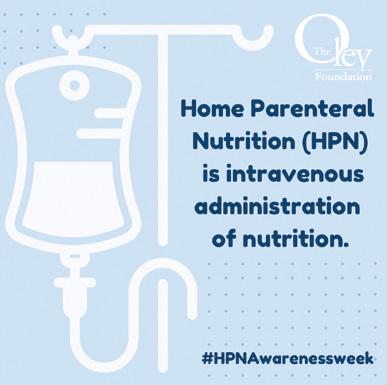
HPN Awareness Week, October 13–19
Stay tuned to oley.org for news about planned events!

LifelineLetter, Summer 2024 page 5 For more information, call 877. 686. 2622 or visit optioncarehealth.com Option Care Health locations are ACHC accredited. HHA numbers are available to view at optioncarehealth com. ©2024 Option Care Health, Inc. All rights reserved. 21OCH07089
Enteral Feeding Intolerance: Can PeptideBased Formulas Help?
Manpreet S. Mundi, MD | Oley Foundation Science & Medicine Advisor

Enteral nutrition (tube feeding), which usually delivers nutrition directly to the stomach or the intestines, can help someone get the nutrition and hydration they need when they cannot drink or eat safely. Enteral nutrition can be given through nasal tubes (NG tubes), which are often used for short-term nutrition support, or percutaneous tubes (G tubes) placed right into the abdomen for long-term nutrition support. When nutrition support is needed, feeding into the gastrointestinal (GI) tract has some benefits over parenteral nutrition, which is delivered intravenously into the bloodstream. Its benefits include being more natural (through the GI tract, the way our bodies are meant to get nutrition); better immune function; better microbiome; less inflammation; and keeping the mucosal integrity of the GI tract. Also, enteral nutrition can be more costeffective than other ways of nutrition support, such as parenteral nutrition.
Despite these benefits, enteral nutrition is not without risk and can be associated with a number of complications. Nasal tubes can cause skin breakdown at the opening of the nose, or be dislodged or fall out. Percutaneous tubes can be associated with granulation tissue, infections, or leaking at the insertion site (where the tube comes out of the abdomen).
In addition to tube-related complications, patients may also have side effects related to the formula itself. This is typically referred to as enteral feeding intolerance (EFI). There is no consensus on the exact definition of EFI, however typical symptoms can include nausea/ vomiting, reflux, gas/bloating, distention, abdominal pain, diarrhea, or constipation. Although it is being used less frequently now, many clinical trials and hospital practices also considered high gastric residual volumes (GRV), or the volume of fluid in the stomach, as a sign of EFI. This practice has decreased
after studies showed that checking gastric residual volumes did not improve clinical outcomes. Enteral formula intolerance can have significant negative consequences as these symptoms usually result in lower rates of feeding or the enteral nutrition being held or stopped, resulting in the patient being unable to meet their nutrition needs.
A recent review of eighty-nine clinical trials in adults showed that criteria used to define EFI varied significantly from study to study (Jenkins et al. 2022). Most common definitions of EFI involved the combination of GRV and GI symptoms, with other studies combining these with inability to meet enteral nutrition target. The cutoff for high GRV ranged from 75 ml up to 500 ml. Based on these findings, the authors recommended three key criteria to define EFI:
1. The patient is unable to receive at least 80% of their enteral nutrition goal.
2. The presence of GI symptoms such as vomiting, reflux/regurgitation, diarrhea, or abdominal distention.
3. The team managing enteral nutrition has eliminated other causes of the symptoms, such as infections, medications, or the patient’s anatomy (history of GI surgery such as bariatric surgery).
Despite these challenges with the definition, we do know that EFI is quite prevalent. Studies in critically ill patients have shown that EFI can occur in 30 to 40% of these patients (Gungabissoon et al. 2015; Rice et al. 2011; Wang et al. 2017). This drops to about 25% for hospitalized patients and about 20% for home enteral nutrition patients (Gungabissoon et al. 2015; Mundi et al. 2023; Wang et al. 2017). Another challenge with EFI is that there is no consensus regarding management. Typically, as part of the diagnostic criteria any other causes of GI symptoms have been eliminated. Once the symptoms are known to be related to the enteral nutrition, attempts can be made to change how the formula is being provided, such as slowing down the rate or even changing the location where the enteral feeds are provided (going from the stomach to the intestines). However, if these steps are unsuccessful, a change in enteral formula is often considered.
Continued on next page >
page 6 feature
Enteral Formulas
Currently, enteral formulas are available in a number of categories:
• Standard polymeric formulas, which typically consist of intact protein, complex carbohydrates and long-chain fatty acids, are usually recommended as the initial formula for most patients.
• Blenderized tube feeding formulas, which can be either commercially blended or prepared at home, typically contain whole food ingredients and are growing in popularity.
• Elemental formulas typically contain individual amino acids and smaller fatty acids and are more rarely used.
• The last large category consists of peptide-based formulas, which typically use enzymes to break down the protein into smaller chains and provide more of the fats as medium chain triglycerides. There is a great deal of data emerging regarding the use of peptide-based formulas in EFI. Theoretically, the use of enzymes to break down proteins into smaller chains and increasing the amount of di- and tri-peptides can result in better absorption, especially in those with altered anatomy. Studies have shown that transporters such as PepT1 can help with di- and tri-peptide absorption. In patients with short bowel syndrome, this transporter can be expressed in higher amounts, allowing them to absorb nutrients better with time (Ziegler et al. 2002).
Similarly, using medium chain triglycerides can improve absorption and fat utilization. Long chain triglycerides require a great deal of processing before they can
be absorbed. The complicated process starts with emulsification by bile salts, which increases their surface area. They are then broken down by pancreatic lipases into monoglycerides and free fatty acids, which are absorbed into the intestinal cells. Inside these cells, they are re-esterified to form triglycerides and packaged into chylomicrons for transport through the lymphatic system, finally reaching our blood and being disseminated throughout the body. Medium chain triglycerides, on the other hand, don’t require emulsification or significant breakdown by pancreatic lipases and can be readily absorbed and released into the blood supply heading to the liver, where they can be used for energy.
Clinical studies have supported these theoretical benefits. A retrospective review of critically ill patients showed that symptoms of EFI were 15% lower with the use of 100% whey protein peptide-based formula compared to standard polymeric formula (Nguyen et al. 2024). Similarly, in hospitalized patients in various cohorts (or groups) ranging from patients who have had abdominal surgery to those with pancreatitis, peptide-based formulas led to improved weight gain, better tolerance, lower costs, and shorter length of stay (Hammaoui et al. 1990; McClave et al. 1997; Tiengou et al. 2006).
In the home enteral nutrition population, a retrospective study evaluating patients who were switched from standard polymeric formula to peptide-based formula due to EFI symptoms had a significant reduction in their symptoms of nausea/vomiting (from 42% down to 22%), diarrhea (46% down to 25%), and abdominal pain (22% down to 5%), with 49% of patients having no symptoms after the switch (Mundi et al. 2020; see figure 1). This study also demonstrated that the number of phone calls initiated by the patient, emergency room visits, and number of scheduled visits also decreased (see figure 2). Other studies have produced similar results in the adult population as well as in children (LaVallee et al. 2021; Mohamed Elfadil et al. 2022).

Continued on next page >
LifelineLetter, Summer 2024 page 7
Enteral Feeding Intolerance, continued
Figure 1. Change in symptoms of enteral feeding intolerance after transition to peptide-based formula (PBD). Adapted with permission from Mundi et al., 2020.

Summary
When someone cannot eat or drink normally without risk, enteral nutrition is better than other options, such as parenteral nutrition, because there is clear evidence of its advantage. However, enteral nutrition can also cause problems, and studies show that EFI happens frequently, both in patients who are at home and those in the hospital. Often, EFI management involves switching formulas. New research shows that using a peptide-based formula with broken down proteins and shorter fatty acid chains can improve EFI symptoms and reduce health care use. More research is ongoing to learn how this affects the patient at a cellular level and to keep improving the formulas we can offer for the best nutrition. ■
References
Mohamed Elfadil O, Steien DB, Narasimhan R, et al. Transition to peptidebased diet improved enteral nutrition tolerance and decreased healthcare utilization in pediatric home enteral nutrition. J Parenter Enter Nutr. 2022;46(3):626-634. doi:10.1002/jpen.2202
Gungabissoon U, Hacquoil K, Bains C, et al. Prevalence, risk factors, clinical consequences, and treatment of enteral feed intolerance during critical illness. J Parenter Enter Nutr. 2015;39(4):441-448. doi:10.1177/0148607114526450

Hamaoui E, Lefkowitz R, Olender L, et al. Enteral nutrition in the early postoperative period: a new semi-elemental formula versus total parenteral nutrition. J Parenter Enter Nutr. 1990;14(5):501-507. doi:10.1177/0148607190014005501
Jenkins B, Calder PC, Marino LV. A systematic review of the definitions and prevalence of feeding intolerance in critically ill adults. Clin Nutr ESPEN 2022;49:92-102. doi:10.1016/j. clnesp.2022.04.014
LaVallee C, Seelam P, Balakrishnan S, et al. Real-world evidence of treatment, tolerance, healthcare utilization, and costs among postacute care adult patients receiving enteral peptide-based diets in the United States. J Parenter Enter Nutr. 2021;45(8):1729-1735. doi:10.1002/jpen.2074
McClave SA, Greene LM, Snider HL, et al. Comparison of the safety of early enteral vs parenteral nutrition in mild acute pancreatitis. J Parenter Enter Nutr. 1997;21(1):14-20. doi:10.1177/014860719702100114
Mundi MS, Mohamed Elfadil O, Olson DA, et al. Home enteral nutrition: A descriptive study. J Parenter Enter Nutr. 2023;47(4):550-562. doi:10.1002/jpen.2498
Mundi MS, Velapati S, Kuchkuntla AR, Hurt RT. Reduction in healthcare utilization with transition to peptide-based diets in intolerant home enteral nutrition patients. Nutr Clin Pract. 2020;35(3):487-494. doi:10.1002/ ncp.10477
Nguyen DL, Schott LL, Lowen CC, et al. Characteristics and feeding intolerance in critically ill adult patients receiving peptide-based enteral nutrition: A retrospective cross-sectional study. Clin Nutr ESPEN 2024;59:270-278. doi:10.1016/j.clnesp.2023.12.007
Rice TW, Mogan S, Hays MA, Bernard GR, Jensen GL, Wheeler AP. Randomized trial of initial trophic versus full-energy enteral nutrition in mechanically ventilated patients with acute respiratory failure. Crit Care Med. 2011;39(5):967. doi:10.1097/CCM.0b013e31820a905a
Tiengou LE, Gloro R, Pouzoulet J, et al. Semi-elemental formula or polymeric formula: is there a better choice for enteral nutrition in acute pancreatitis? Randomized Comparative Study. J Parenter Enter Nutr. 2006;30(1):1-5. doi:10.1177/014860710603000101
Wang K, McIlroy K, Plank LD, Petrov MS, Windsor JA. Prevalence, outcomes, and management of enteral tube feeding intolerance: a retrospective cohort study in a tertiary center. J Parenter Enter Nutr 2017;41(6):959-967. doi:10.1177/0148607115627142
Ziegler TR, Fernández-Estívariz C, Gu LH, et al. Distribution of the H+/ peptide transporter PepT1 in human intestine: up-regulated expression in the colonic mucosa of patients with short-bowel syndrome. Am J Clin Nutr. 2002;75(5):922-930. doi:10.1093/ajcn/75.5.922
Oley President Interviewed
Kelly Tappenden, PhD, RD, Dean of the College of Health at University of Utah Health and President of the Oley Foundation Board of Trustees, was recently interviewed for the Women in Leadership series by University of Utah Health. Dr. Tappenden says, “I was drawn to the science of metabolism, and it was inspiring to put it into action in the field of nutrition... I’ve been fortunate to help develop diets that patients can better absorb and contributed to the only drug for short bowel syndrome on the market.” Learn more about this inspiring woman at bit.ly/KTappendenInterview.
page 8 feature
Enteral Feeding Intolerance, continued
Figure 2. Change in health care utilization after switching to peptidebased formula (PBD). Adapted with permission from Mundi et al., 2020.
Register for Kidz Klub @ Oley 2024
Do you have kids ages 5 to 12 who are coming to the Oley annual conference?
Space is limited, so enroll them today in Oley’s Kidz Klub.
We are excitedly making plans to help Kidz Klub attendees have their best conference ever. We’ll have a blast doing group games, decorating crafts, playing together, and learning what it means to be connected.
Guests, such as the Phoenix Zoo, will bring in handson learning opportunities. Children will connect with one another, have fun, and learn in a safe, secure environment.
Check oley2024.vfairs.com/en/kidz-klub to see the schedule and full list of Kidz Klub activities. Register your child today to be a part of our activities and fun. See you at the conference.
Register yourself and your child(ren) at oley2024.vfairs.com/en/registration-form.

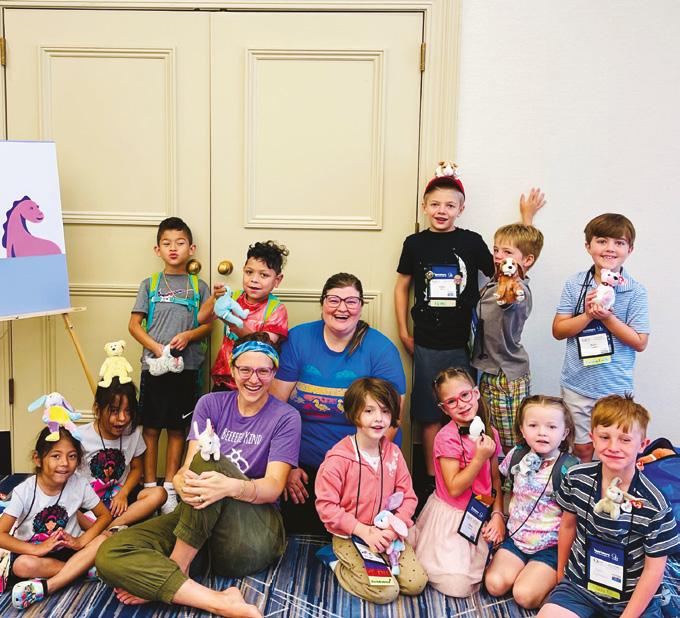
Maisie and I LOVED our first Oley conference [St. Louis, 2023]! I could see how big of an impact the community made on both of us. Of course, I loved the time with other moms— it is the very best support out there. Maisie would tell you her favorite part was playing with her friends! Never has she ever before stayed up late watching movies and playing hide and seek in a hotel lobby—she was living her best life. And as her mom, I once again saw there really are no limits to what she (and we) can do.
I am so grateful for the community and the connections and support we both experience at Oley. —Sarah E.
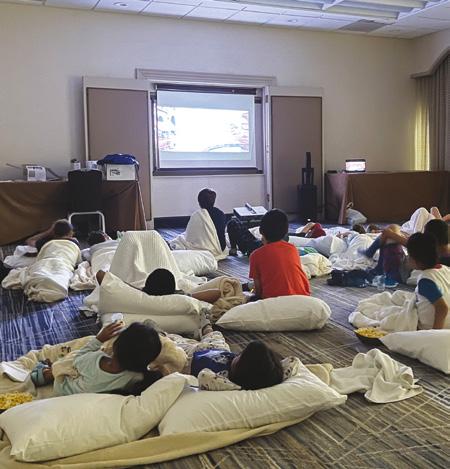

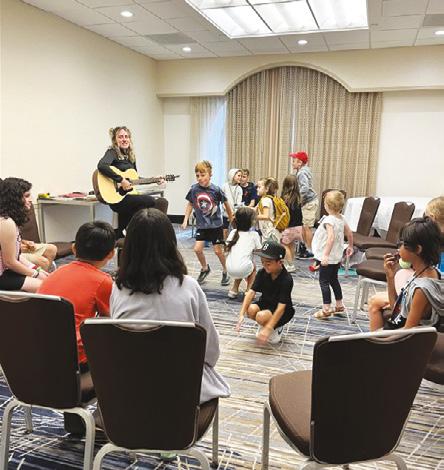
LifelineLetter, Summer 2024 page 9
Speaking Up for Yourself and Others
Beth Gore, PhD | Executive Director

Advocacy 101 Advocacy 101 Amelia Williams

Advocacy can empower individuals to create positive change in healthcare, education, employment, and community inclusion—both for themselves and for others. This article delves into some of the essentials of effective advocacy and offers thoughts to help you embark on your own journey across multiple types of advocacy.
Understanding Effective Advocacy
To be an effective advocate, it’s important to know where to start.
First is knowledge. What are you asking for? What are its implications, potential objections, and available alternatives? What resources are required?
Assertiveness is also crucial. Are you willing to voice your needs confidently and stand up for yourself?
Do you have the necessary resources and support to remain composed, focused, and self-assured? At the same time, are you willing to listen to other perspectives and points of view?
Another key feature is persistence. Can you continue pushing forward despite resistance? Do you have a plan in place for when you encounter obstacles? Have you assessed how vital your request is and what resources you are willing to commit to it?
Finally, it’s important to maintain respect throughout your advocacy efforts. Are you able to uphold your



values, even when faced with challenges? Have you learned how to respectfully disagree while asserting your position?
Throughout this article, we will focus on a few specific areas of advocacy. With each section, we will touch on these three elements:
• know your rights
• understand the resources available
• take decisive action
Navigating Healthcare Advocacy
In its simplest form, this is where patients actively engage in their care or the care of a loved one, collaborate in decision-making, and advocate for their needs and preferences. Partnering with healthcare providers is part of navigating this process. This partnership fosters personalized, patient-centered healthcare, improving outcomes and enhancing the patient experience.
Every individual has the right to be treated with respect and dignity, regardless of their disability or medical condition. You also have the right to privacy and confidentiality regarding your medical information; to seek a second opinion; and to have
Every individual has the right to be treated with respect and dignity, regardless of their disability or medical condition.

page 10 feature
Continued on next page >
Based in large part on “Advocacy 101: From the Doctor’s Office to Capitol Hill,” a webinar by Amelia Williams, offered by the Oley Foundation March 26, 2024. A recording of this webinar is available on the Oley Foundation YouTube channel.
Young Adult Rare Representative, The EveryLife Foundation
access to your medical records. You have the right and the autonomy to make decisions about your healthcare.
Sometimes it’s important to consider utilizing available resources such as patient advocates, insurance case managers, and Americans with Disability Act (ADA) advocacy organizations.
Taking action includes bringing supportive individuals to medical appointments, being open and honest with healthcare providers, preparing questions and concerns beforehand, documenting interactions, and seeking second opinions when necessary.
Advocating in Education & Employment
Whether your child is just starting preschool or you are finishing a graduate degree—and whether you are starting your first job or finishing your career— advocacy plays an important role.
To advocate in an education setting, familiarize yourself with legal protections like the Individuals with Disabilities Education Act (IDEA) and Section 504 of the Rehabilitation Act of 1973. Collaborate with organizations like the American Association of People with Disabilities (AAPD) and engage with your or your child ’s school through open communication and attendance at meetings, such as Individualized Education Program (IEP) meetings. Pursue mediation or complaints if needed.
Similarly, to advocate in an employment setting, you want to know and understand your rights under the Americans with Disabilities Act (ADA) and leverage resources such as vocational rehabilitation programs and job accommodation networks. Advocate for accommodations, maintain detailed records, and address discrimination if encountered.
Remember, advocacy in education and employment is not about searching for issues in every aspect of school or work life, but instead ensuring a level playing field by understanding your rights, accessing relevant resources, advocating for accommodations when needed, and addressing discrimination if encountered.
Recreation Advocacy
It ’s easy to overlook the importance of recreation and other aspects of life when managing chronic illness and/or therapies. However, incorporating recreation
and fun into your routines is vital. It promotes overall well-being, reduces stress, improves mood, and fosters social connections, all of which contribute to a balanced and fulfilling life despite health challenges.
Did you know there are rights associated with recreation? Some rights and protections provided by the Rehabilitation Act of 1973 and the ADA are regarding access to community activities and recreation for individuals with disabilities.
Identify activities you enjoy, explore community resources, and advocate for accommodations that promote inclusion and belonging for individuals with disabilities. Consider connecting with adaptive sports organizations, patient support groups, and hospitals ’ recreation therapy programs to find inclusive recreational opportunities.
PATIENT ADVOCACY PATIENT ADVOCACY COMMUNITY COMMUNITY
Community-Level Advocacy
Beyond individual advocacy, there are numerous avenues for community-level impact. Consider offering personal support to individuals with disabilities, sharing your story to promote understanding, or joining formal advocacy groups or school-based organizations. Maybe you’re interested in getting more involved with the Oley Foundation or other patient organizations, participating in legislative advocacy efforts, engaging in direct nonprofit work, and contributing to regulatory patient advisory programs.
Adding your voice to community-level advocacy efforts is valuable as it amplifies the collective impact and drives meaningful change. By sharing your experiences, expertise, and perspectives, you
LifelineLetter, Summer 2024 page 11
Speaking Up for Yourself & Others, continued Continued on next page >
could contribute to shaping policies, programs, and services that benefit individuals with disabilities and chronic illnesses. Your involvement in advocacy groups, legislative efforts, nonprofit work, and regulatory programs strengthens advocacy networks, promotes awareness, and empowers communities to advocate for equitable access, inclusion, and rights for all.
Summary
Advocacy can be a potent force for positive change. By understanding your rights, utilizing available resources, and taking meaningful action, you can become a formidable advocate for yourself and others. Remember, every voice matters, and your advocacy journey can make a significant difference in the lives of many. ■
We want to hear
from you!
Tell us ways you have used your voice for positive change. Email us at info@oley.org.
FROM THE OLEY MAILBOX:
A Mother’s Journey Through Advocacy & Access
I am the mother of a teenage son. I live in a state where the day before the child turns 12 until he is 18, parents are not allowed to have access to the child’s medical information. This makes sense in some situations, such as teenage pregnancy, mental health concerns, etc. No problem, he can have his own patient portal. But not so fast. This hospital system disallows people from having a portal until they are 18. This means NO ONE can see this information from 12 to 18?
After a lot of researching, reading, learning, I contacted national organizations, experts, and even an attorney to see if I was understanding the law. Sure enough, there’s a law—The Cures Act—that prohibits interfering with or charging for electronic health information. It says, “Without cost and without delay.” So even if I as a parent couldn’t have access, my SON has the right to it.
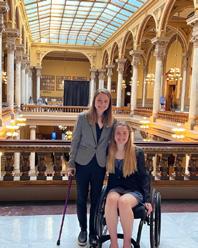
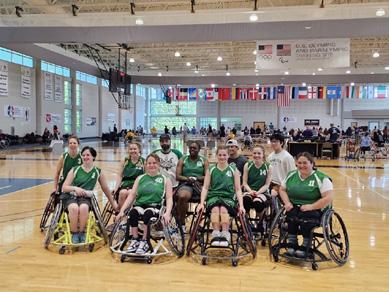



I can’t tell you how many times I wanted to give up. It was frustrating, confusing and exhausting, and it took a lot of time. It took countless phone calls and emails and over two and a half years. But ultimately, I was able to work within our hospital system and now our family and hundreds of other families have access.
Recently, my son was admitted to the hospital. And because we had access to his portal, we were able to instantly see a critical error. As a result, I was able to advocate for him to get the necessary changes before it caused further issues. Without insight to this, I shudder to think how that story could have gone.
All that to say, advocacy is sometimes long and hard work. Ultimately, it’s worth it most of the time. Thanks to Oley for helping me understand the value of personal and national advocacy!
—Oley Member
◀ Learn more about all the types of advocacy discussed above—including many great tips and resources in each of these areas—by watching Amelia Williams’s presentation “Advocacy 101: From the Doctor’s Office to Capitol Hill,” offered as a webinar by the Oley Foundation in March and now available on the Oley Foundation YouTube channel. Amelia does a tremendous job describing her own journey into advocacy, while offering ideas and resources that will help all of us as we advocate for ourselves and others.
MY STORY MY STORY Advocate page 12 feature
Speaking Up for Yourself & Others, continued
ONE-ON-ONE ABOUT SBS TO A PATIENT OR CAREGIVER WHO UNDERSTANDS
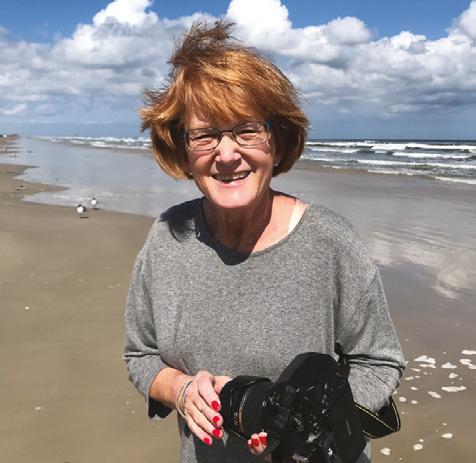
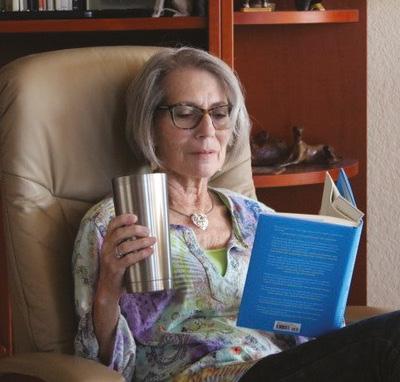
LEARN ABOUT HEAR STORIES ASK QUESTIONS personal experiences with SBS and a potential treatment option
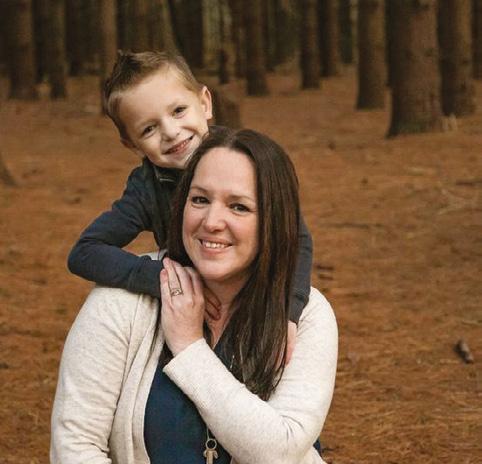
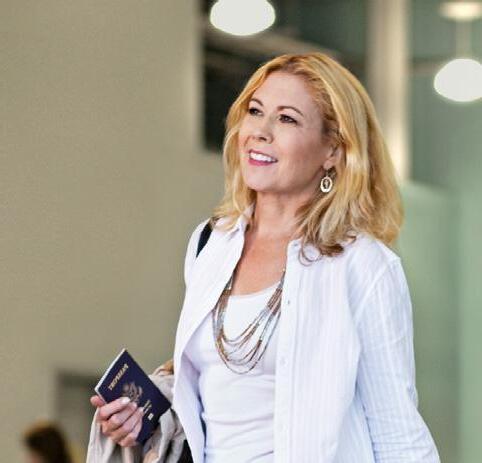
WITH SBS about the SBS journey
CLICK HERE OR SCAN THE QR CODE TO TALK TO AN SBS MENTOR
YOU’RE NOT ALONE IN THIS JOURNEY TALK DIRECTLY TO SOMEONE ELSE
on how caregivers can provide support
RETA, LIVING WITH SBS SINCE 2012 KAT, LIVING WITH SBS SINCE 1972 US-NON-10113v1.0 08/23 ©2023 Takeda Pharmaceuticals U.S.A., Inc. Not intended for medical advice. Always consult a physician.
SPEAK
SINCE
PEGGY, LIVING WITH SBS
2013
SBS SINCE 2019, WITH HIS
REID, LIVING WITH
MOM, JODI
Making Connections
Cathy Harrington | Operations Manager
What’s my favorite time of the year— spring? summer? No, it’s conference time. When spring arrives, my heart starts beating faster and I feel a sense of excitement. I know the conference is just around the corner. This event carries me through the year. There are many details that go into the planning and decision making to make this a one-of-a-kind event.
For over a quarter of a century, I have had the privilege of attending the Oley annual conference, and I really enjoy how everyone feels like family. Each year, as we converge from various corners of the world, there’s a sense of returning home. The folks that come every year connect again with one another and help those who are new to the conference feel welcome.

I remember my first Oley conference in 1999 in Salt Lake City, Utah, experiencing the coming together and sharing the exchange of knowledge. It was heartwarming, and there is an irreplaceable magic to it, watching lifelong friendships blossom. Seeing everyone’s faces, both new and familiar, brings the event to life. Going back, I recall meeting Robin Lang for the first time: she was a clown—yes, a real clown. We had so much fun together during and after those conferences. She, like many others from the past, is no longer with us and is greatly missed.
At the conference, my tasks are mostly done behind the scenes. They include running registration, handing out name badges, arranging supplies, and helping when needed. I love meeting everyone at check-in, but it is usually busy, so we don’t get much time to talk. It starts with a flood of faces—a testament to the diversity and passion of our community. Some are veterans and others are first timers, and everyone has that spark of anticipation in their eye. After the first initial rush, things start to slow down at the registration desk. That’s the best time to stop by if you have questions, or if we can assist


in any way. After speaking with many of you over the phone or via email, I love having the opportunity to meet you in person.
The registration desk is like a beacon, a lighthouse guiding attendees. It is the start of an adventure, and I’m proud to be part of the journey. Stop by to update your membership information, sign our Oley 2024 attendance book, and let us know your thoughts both on the conference and in general. And as Oley expands, so does our call for involvement. Volunteer applications aren’t just forms; they are invitations to be architects of our future. Your talents and your invaluable insights— they’re the blueprint for Oley’s tomorrow. I really hope to see many of you this year, in Tempe. ■
page 14
behind the scenes
Oley member Robin Lang shared her talents as Peaches the Clown at several Oley conferences.
WHERE WAS OLEY? Our Conference Locations
2005 SARATOGA SPRINGS, NEW YORK
2010 SARATOGA SPRINGS, NEW YORK
1999 SALT LAKE CITY, UTAH
2006 SALT LAKE CITY, UTAH
BLOOMINGTON, MINNESOTA
ILLINOIS
BEACH, CALIFORNIA
BEACH, CALIFORNIA 2002 KNOTT’S BERRY FARM, CALIFORNIA
CALIFORNIA
TOTAL CONFERENCE ATTENDEES
9,217
2015 SARATOGA SPRINGS, NEW YORK
MILWAUKEE, WISCONSIN 2009 ST. PETERSBURG, FLORIDA 2018 MEMPHIS, TENNESSEE 2008
LOUIS, MISSOURI
2000 BOSTON, MASSACHUSETTS
2013 HYANNIS, MASSACHUSETTS
2003 ST. AUGUSTINE, FLORIDA
This map shows where Oley annual conferences have been held since 1999. Not reflected are the virtual conferences held in the early 2020s. Through these conferences, we have brought together more than nine thousand consumers and caregivers, clinicians, and homecare professionals to learn, socialize, and support one another in the journey of nutrition support.
How does Oley select conference sites?
Many factors are taken into consideration when deciding on the location of our annual conferences.
Just a few of those many factors are:
• Size, availability, and cost of conference facilities
• Cost of hotel rooms for attendees
• Availability and cost of travel options
• Proximity to medical facilities
Tell me a little about Tempe!
• Founded in 1871 by Charles Trumbull Hayden
• Population: 185,000+
• 330 days of sunshine each year
• Elevation of 1,163.8 feet
• The ASU Tempe Campus is one of the largest public universities in the U.S.
source: tempetourism.com
2011
2001
2016
2012 REDONDO
2004
2024 SAN DIEGO,
TEMPE, ARIZONA
NEWPORT
SAN FRANCISCO, CALIFORNIA
2023 ST.
2019 LINCOLNSHIRE,
2014 ORLANDO, FLORIDA 2017 OLD GREENWICH, CONNECTICUT 2007 HYANNIS, MASSACHUSETTS
LifelineLetter, Summer 2024 page 15
Oley 2024: Connected Information & FAQs
June 29–July 2 • Tempe, Arizona
What can you expect at this year ’s Oley annual conference?
If you ’ve attended before, watch for some exciting changes. If this is your first time attending, there ’s much to look forward to!
Experience Expo
The Experience Expo will be a new and more dynamic version of our traditional exhibit hall. As always, it will feature industry experts who are eager to share their knowledge and experience, to provide valuable insights into their products and services, and even offer hands-on demonstrations. It is the place to learn about the latest trends, best practices, and emerging technologies directly from the source.
This year, we’ve asked each exhibitor to create an interactive booth experience that is educational and engaging. Also new is the opportunity to visit these industry partners outside of meals with minimal distractions. You asked for more time to connect with one another, a less intimidating exhibit hall, and an opportunity to rest during the conference, and the Experience Expo offers all of this.
Fashion Show
Since its debut at Oley 2023 in St. Louis, the Wear Your Pump Runway Fashion Show has become an annual event. This fashion show is designed for individuals on home tube feeding and IV nutrition, showcasing how they incorporate their pumps into their active lifestyles. Whether you carry your pump everywhere or adapt your nutrition delivery to suit your routine, we want to see your style! Showcase adaptive clothing or your favorite outfits in categories like formal wear, school/work, beach/vacation, and costume. All ages are welcome to participate. Prizes will be awarded courtesy of Moog Medical.

For Fashion Show rules and registration, please visit oley2024.vfairs.com/fashion-show.
FAQs
Where do I register? How do I register my children or others who are traveling with me?
All attendees should register at oley2024.vfairs.com. Parents, register your child(ren) for Kidz Klub when you register yourself. (More about Kidz Klub on page 9!)
Can I register when I get to the conference?
Walk-in registrations leave us at a disadvantage. If we don’t know you’re coming, we can’t plan for you in terms of food, space, and other resources. Believe it or not, in the past we have had as many as forty people register on the first day of the conference! It is wonderful to have more people attend, but it can be difficult to accommodate a lot more people.
We know it is hard to plan around complex medical conditions and understand if you register and then have to cancel. Please do let us know if you are registered and can’t make it. And don’t forget to cancel your hotel reservations separately!
How soon do I make hotel reservations?
The hotel registration link and discount code will be listed in your registration confirmation email. The Oley room rate is $125 per night plus tax for single/double occupancy (total $139). The room block is open until May 30, and will be honored three days pre and post conference, based on availability.
The Oley 2024 conference will be held at:
Omni Tempe Hotel at ASU
7 East University Drive Tempe, Arizona 85281
Phone: (602) 794-8600
We are guaranteed to run out of rooms this year, so book as soon as possible. There is a 72-hour cancelation policy. It is best to have the room and cancel if necessary.
page 16
Continued on next page >
conference news
Are there refrigerators available for medical supplies?
The conference hotel has mini refrigerators in each of their guest rooms. However, they are small, and the hotel does not routinely have backup fridges on the property in case of failure or additional guest needs. If you have medical supplies that need to be refrigerated during your stay, you may need additional refrigeration. The hotel is willing to refreeze ice packs and may be able to help with more space in some capacity as needed, but it is in your best interest to plan and prepare. Oley cannot provide refrigerators in a common area to meet this need.

When making your reservation, inform the hotel about your refrigeration and freezer needs. This proactive communication will help the hotel to better prepare for your stay. More options to consider:
• Bring a collapsible cooler bag or purchase/rent an electric cooler.
• Contact your home care company to see if they can assist with your needs.
• Check with family and friends attending the conference who might not need to use their room fridge.
• Network if you belong to any online therapy or disease groups to see if any local families in Arizona have heavyduty coolers you could borrow.
• Search online for local party rental businesses that serve Tempe, Arizona. Use terms like “ice chest,” “coolers,” and “beverage fridge” to get the most relevant results.
• Talk to your friends and other consumers to see what they have done when traveling. Other resources for traveling can be found at oley.org/TravelTipsHomePEN.
Hotel Tips & Tricks:
• Sign up for the Omni rewards program to receive a drink coupon on the property.
• Have pockets, will travel! The hotel requires you to swipe your key card to access every floor, ice machine, elevator, and doorway to amenities.
• The price of coffee in the Neighborhood restaurant is per cup, not unlimited refills.
• High profile vehicles will not be able to use valet parking. Please email info@oley.org for assistance with other parking nearby.
How do I plan for the Arizona weather?
The average daytime temperature in Tempe in June/July is 105°F during the day and a low of 86°F at night. It’s best to dress in layers, in light, breathable fabrics and cool colors. Throw a sweater into your suitcase as the indoor air conditioning can make the temperature extremes between outside and inside difficult, especially in large ballrooms. Most residents use services like DoorDash, UberEats, and Instacart to get food and sundries delivered. Few residents are outside during the hottest part of the day, between 11 a.m. and 4 p.m. (think: how do I manage winter temperatures in cold climates?). Tempe is a college town with an active nightlife and many restaurants and attractions nearby.
• Wear sunscreen, use umbrellas and wide-brimmed hats when outside.
• The hotel has a rooftop swimming pool, but it is not protected from direct sunlight.
• Prepare for the heat even after sunset.
• Hydrate. You may want to talk to your medical team about additional hydration needs during your travel. Water stations are throughout the hotel and in the conference spaces.
How accessible is the conference space?
We aim to ensure all attendees enjoy a comfortable experience at our event. While the hotel is ADA compliant, some areas may pose challenges for larger mobility scooters or other assistive devices. Attendees using such equipment should plan ahead and contact us with any concerns. We strive to make the event accessible and enjoyable for everyone. For easier navigation in crowded spaces at Omni Tempe, ASU, consider a smaller mobility device. Contact Oley to discuss your needs and request accommodations. Our official mobility aid partner, Mobility City, can deliver equipment to the conference hotel.
Mobility Equipment Sales, Rentals, & Repairs phoenixaz.mobilitycity.com
885 E. Warner Road, Suite 103, Gilbert, AZ 85296
Phone: (480) 351-4447. Contact: Adrian Power
Continued on page 19 >
Oley 2024: Connected Information & FAQ, continued
Oley Events 2024-25 Calendar
Check Oley.org or other appropriate websites for the most up-to-date information on the events listed below.
Ongoing: Applications are being accepted for Oley Tim Weaver Camp Scholarship
May 21: Oley Mental Health Awareness Month Webinar
May 24: Oley Community Connection: Minds Matter: Discussing Unique Mental Health Challenges in the Nutrition Support Community
June 29–July 2: Oley 2024 Connected, Tempe, AZ
September 16–20: Malnutrition Awareness Week
September 20: ASPEN/Oley Webinar
September 28–30: Oley exhibiting at the Association for Vascular Access (AVA) Annual Scientific Meeting, Boulder, CO
October 13–19: HPN (Home Parenteral Nutrition) Awareness Week
February 9–15, 2025: Feeding Tube Awareness Week
For more information, visit oley.org, email info@oley.org or call (518) 262-5079.
Additional Meetings of Interest
July 25–27: Equity in GI, Color of Gastrointestinal Illnesses (COGI) Annual Meeting, Atlanta, GA
October 15–17: National Organization for Rare Disorders (NORD) Rare Diseases and Orphan Products Breakthrough Summit, Washington, DC
Community Connections
Minds Matter: Discussing Unique Mental Health Challenges in the Nutrition Support Community
FRIDAY, MAY 24 • 6:00 PM ET
Register at bit.ly/oleymindsmatter
The relationship between mental and physical health is complicated, and resources can be difficult to access. This evening will be an opportunity to ask questions, share stories, talk about how to access resources, and explore coping mechanisms that have helped us work through some of these challenging experiences.
Please submit questions and topics for discussion when registering to help prepare facilitators.
Note: This will be a discussion about difficult topics related to mental health. Due to the subject matter, it is recommended that participants under the age of 18 attend with a parent/guardian.
Webinars
Oley May Webinar
TUESDAY, MAY 21 • 6:00 PM ET
Register at bit.ly/oleymaywebinar
Join us to hear Erica Smith, MSW, LCSW, share the complexities of working with clients with chronic illnesses in a mental health therapy setting.
Please submit any questions for the presenter when registering. Erica will answer as many of these as possible during the presentation.
Don’t Forget to Register!
Learn more about Oley events—including how to register—at oley.org/events. Community Connections and Webinars are offered free of charge.
page 18
calendar + events
Thank You Corporate Partners
Please join Oley in thanking the companies that provide unrestricted grants to support the foundation year-round. Learn about our most recent corporate contributors in their own words below. For a complete list of corporate partners, visit Oley.org/PartnerShowcase.

Alcresta Therapeutics
Alcresta develops rare disease, enzyme-based products helping to address fat malabsorption in patients who are enterally fed at home or in the hospital. Our RELiZORB ® (immobilized lipase) is indicated for use in pediatric patients (ages 2+) and adult patients to hydrolyze fats in enteral formula. Please see Instructions for Use at www.relizorb.com.
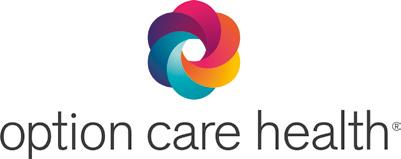
Option Care Health
Option Care Health is the nation’s largest independent provider of home and alternate site infusion services. We specialize in infusion treatments for a broad range of acute and chronic conditions with access to the most innovative therapies and drugs available nationally. To learn more, please visit our website at OptionCareHealth.com
Notable Individual Contributions
Among the contributions we receive, there are always several dedicated to those who have inspired the donor. We share the list of honorees below. We are grateful for the following gifts received from February 17 to April 15, 2024.
Memorials
In Memory of Ester Ann Brown Adler; Mary Patnode
Tributes
In Honor of Charlie Cleberg, “25 years on 100% HEN”; Aidan Koncius; Jennifer Merriam; Jeffrey Nemeth
Matching Donation
United Healthcare Group
Fundraiser
Thanks to Ajinomoto Cambrooke, Inc. for their OneHope Wine Fundraiser
Oley 2024: Connected Information & FAQ, continued
What about package delivery fees for medical supplies to the hotel?
We are facing a unique situation with Omni Tempe, ASU’s package handling fees. This is the first time in our conference history that we’ve encountered a property charging a package handling fee for guests, not just exhibitors. It’s a challenge we’re determined to address. In response to this issue, we’ve taken proactive steps. We’ve included the package handling fee in our Request for Proposal (RFP) for future conference locations. We’ve also engaged in discussions with the hotel, requesting them to consider the unique circumstances of our attendees and the medical necessity of these shipments. We’ve even added shipping questions to the registration form to prepare for negotiations on lower costs. We did not budget for Oley to absorb the cost of receiving consumer shipments, so we published the expected rates to prepare our attendees for the worst-case scenario, as the fee is auto added to the folio upon delivery. We are always open to new ideas and suggestions on how to make this conference more accessible, including finding a corporate sponsor to offset these consumer costs. We are committed to finding ways to offset the expenses for families attending this conference, and this is a scenario outside of our control. ■
LifelineLetter, Summer 2024 page 19
A home nutrition therapy community and advocacy group
Corporate Partners
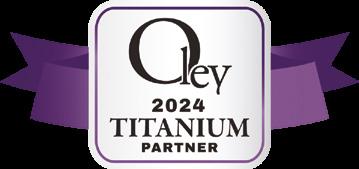

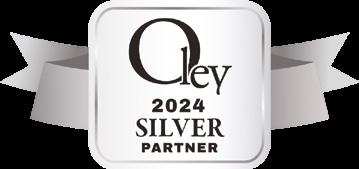
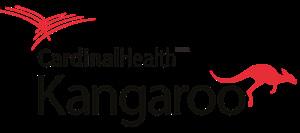



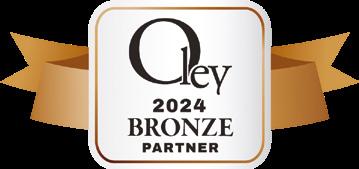











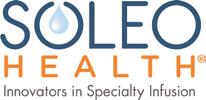




 Tracey Giambertone, MS, RDN, LDN, CNSC
Tracey Giambertone, MS, RDN, LDN, CNSC























































